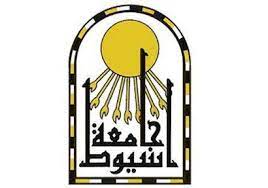اشترك بالحزمة الذهبية واحصل على وصول غير محدود شمرا أكاديميا
تسجيل مستخدم جديدتخزين طاقة النظم الكهروضوئية عن طريق التحليل الكهربائي للماء
Photovoltaicsystem Energy storageusing Water Electrolysis
2131
0 104
0
(
0
)
تمت اﻹضافة من قبل
Shamra Editor
اسأل ChatGPT حول البحث

من المعروف أنَّ الاستطاعة المتاحة من النظم الكهروضوئية لا يمكن التنبؤ بها و تتغير مع تغير الظروف المناخية لذلك فهي تتميز بطبيعة متقطِّعة أي أنّها غير قادرة على تغذية الحمل بشكل متواصل و بمعدلات ثابتة، لذلك كان لابدَّ من دراسة أساليب تخزين للطاقة الكهربائية المنتجة منها بحيث يتم إعادة استخدام هذه الطاقة بشكل يمكن توقعه، و أحد هذه الطرق هو إنتاج الهيدروجين عن طريق ربط النظم الكهروضوئية مع محلِّلات مياه تقوم بتحليل الماء كهربائياً، و بتخزين هذا الهيدروجين يمكن استخدامه بمعدلات ثابتة إمَّا في خلايا الوقود أو عن طريق حرقه مباشرةً و الاستفادة من الطاقة الحرارية المنتجة. هذه الدراسة تُركِّز على النظم الكهروضوئية و الطاقة المتاحة منها و على المحلِّلات و آلية عملها و متطلباتها و نواتجها، و وضع النموذج الرياضي الذي يوصِّف أداءها و رسم المنحنيات التي تعبِّر عنها عن طريق برمجتها باستخدام برنامج الماتلاب MATLAB، و وضع مثال عددي بسيط يوضِّح القيم الموافقة لنظام كهروضوئي ذي استطاعة محدودة. حيث تبين أن المردود الطاقي يتراوح بين 23 إلى 67 % حسب طريقة استخدام الهيدروجين المنتج.
It is known that, the available power from a photovoltaic system is unpredicted and differs with climatic changes, so it has an intermittent nature, in other words it is unable to supply the load continuously and steadily. Because of that, storage methods of its energy must be studied to use it again in a way that could be predicted. Hydrogen production is one of these methods by connecting the PV system to water electrolysers, and this stored hydrogen could be used either in fuel cells or burning it to get thermal energy. This study focuses on PV system and the available energy taken from it, and the electrolysers and its requirements and products. Making a mathematical model would be done and plotting the curves that represent the system by programming it using MATLAB. A simple numeral example that clears the system would be calculated. By this way, the energy efficiency would be between 23 to 67 % according to the way the produced hydrogen is used.
مراجعة الذكاء الصنعي:
ملخص البحث
تتناول هذه الدراسة مشكلة الطبيعة المتقطعة للطاقة المنتجة من النظم الكهروضوئية (PV) بسبب التغيرات المناخية، وتقترح طريقة لتخزين هذه الطاقة باستخدام التحليل الكهربائي للماء لإنتاج الهيدروجين. يتم تخزين الهيدروجين المنتج لاستخدامه في خلايا الوقود أو حرقه للحصول على الطاقة الحرارية. تركز الدراسة على النظم الكهروضوئية والطاقة المتاحة منها، والمحللات الكهربائية ومتطلباتها ومنتجاتها. تم وضع نموذج رياضي للنظام ورسم المنحنيات التي تمثل أداءه باستخدام برنامج MATLAB. أظهرت النتائج أن كفاءة الطاقة تتراوح بين 23% إلى 67% حسب طريقة استخدام الهيدروجين المنتج. كما تم حساب مثال عددي بسيط لتوضيح القيم الموافقة لنظام كهروضوئي ذو استطاعة محدودة. الدراسة تبرز أهمية استخدام المحللات الكهربائية من نوع PEMEC بسبب استجابتها السريعة للتغيرات في المدخلات وإنتاجها لهيدروجين نقي عالي الجودة.
قراءة نقدية
دراسة نقدية: تقدم هذه الدراسة حلاً مبتكراً لمشكلة الطبيعة المتقطعة للطاقة المنتجة من النظم الكهروضوئية من خلال تخزين الطاقة على شكل هيدروجين. ومع ذلك، هناك بعض النقاط التي يمكن تحسينها. أولاً، لم تتناول الدراسة بشكل كافٍ التحديات الاقتصادية المرتبطة بتكاليف المحللات الكهربائية من نوع PEMEC، والتي تعتبر مرتفعة بسبب استخدام مواد مكلفة. ثانياً، لم يتم التطرق إلى تأثير الظروف البيئية المختلفة على كفاءة النظام بشكل مفصل. ثالثاً، يمكن أن تكون الدراسة أكثر شمولية إذا تضمنت مقارنة بين أنواع مختلفة من المحللات الكهربائية وليس فقط التركيز على نوع واحد. وأخيراً، لم يتم التطرق إلى مشكلة تتبع نقطة الطاقة القصوى (MPP) للنظام الشمسي بشكل كافٍ، وهو موضوع حيوي لضمان كفاءة النظام.
أسئلة حول البحث
-
ما هي المشكلة الرئيسية التي تعالجها الدراسة؟
المشكلة الرئيسية هي الطبيعة المتقطعة للطاقة المنتجة من النظم الكهروضوئية بسبب التغيرات المناخية، وكيفية تخزين هذه الطاقة لاستخدامها بشكل مستمر ومتوقع.
-
ما هي الطريقة المقترحة لتخزين الطاقة المنتجة من النظم الكهروضوئية؟
الطريقة المقترحة هي استخدام التحليل الكهربائي للماء لإنتاج الهيدروجين، والذي يمكن تخزينه واستخدامه لاحقاً في خلايا الوقود أو حرقه للحصول على الطاقة الحرارية.
-
ما هي كفاءة الطاقة المتوقعة للنظام المقترح؟
تتراوح كفاءة الطاقة المتوقعة بين 23% إلى 67% حسب طريقة استخدام الهيدروجين المنتج.
-
ما هي المزايا الرئيسية لاستخدام محللات PEMEC في النظام المقترح؟
المزايا الرئيسية لاستخدام محللات PEMEC هي استجابتها السريعة للتغيرات في المدخلات، إنتاجها لهيدروجين نقي عالي الجودة، وقدرتها على العمل تحت ضغط تفاضلي.
المراجع المستخدمة
AKSAKAL, Z. C. Hydrogenproductionfrom water using solar cellspowerednafionmembraneelectrolyzers.Master of science, (2007), 489
LAOUN, B. Thermodynamics aspect of high pressure hydrogen production by water electrolysis. RevuedesEnergiesRenouvelables, (2007), 435 – 444
Lee, B., PARK, K., and KIM, H. M. Dynamic Simulation of PEM Water Electrolysis and Comparison with Experiments. International Journal of Electrochemical Science,(2013, 1, January), 235 – 248
قيم البحث
اقرأ أيضاً
يقوم البحث على تحزيز سطح الخلية الكهروضوئية السيليكونية من أجل تمديد
شبكة التوصيل الكهربائية باستخدام الليزر لتحسين أدائها, و ذلك عن طريق زيادة عمق
الأخدود و تضييق عرضه لزيادة مساحة السطح الفعال, و بالتالي تخفيض خسائر الحجب
بالسماح لأكبر كمية من ا
لضوء بالنفاذ إلى داخل الخلية مع الحفاظ على مساحة مقاطع
خطوط الشبكة.
بين البحث ضرورة بناء نظام توليد طاقة كهربائية شمسية لتأمين الطاقة النظيفة المتجددة وتلبية احتياجات الناس من الطاقة الكهربائية عند حمولة الذروة والمحافظة على بيئة نظيفة في منطقة تدمر. فتمت في البحث دراسة عمل محطة توليد طاقة كهربائية باستطاعة 30MWخلال
النهار، حيث يتم تخزين جزء من الطاقة الحرارية المجمعة في الحقل الشمسي ضمن خزان طاقة حراري محسوس لتغطية حمولة الذروة لاستهلاك الطاقة الكهربائية عند عمل المحطة ليلاً، بين البحث جدوى بناء النظام الشمسي باستخدام لاقط نوع قطع مكافئ في الحقل الشمسي,إذ إن كمية الحرارة المجمعة خلال أشهر السنة مرتفعة وإن ساعات تشغيل المحطة نهاراً تكون كبيرةً، وبناء محطة كهروشمسية عملية مقنعة من الناحية الفنية والاقتصادية. وقد تم في البحث تصميم الحقل الشمسي وتحديد أهم بارامتراته باستخدام برنامج كمبيوتر بلغة C++,وكذلك تمت دراسة أهم مؤشرات المحطة عند عملها خلال أشهر السنة.
تم في هذا البحث دراسة عمليات التقسية السطحية لسبيكة الألمنيوم 7075 بالطلاء
الكهربائي بالنيكل، و من ثم تم تعريض طبقة الطلاء المتشكلة إلى أنواع مختلفة من
المعالجات الحرارية (الانتشار)، و قد حصلنا على طبقات مختلفة السماكة من النيكل.
تم نظرياً توضيح فعل الكمون الذاتي لحاملة الشحنة في جملة مكونة من ثلاث طبقات رقيقة غير متجانسة. و تم الحصول على صيغ طاقة الكمون الذاتي لحاملة شحنة اختباريه متوضعة في الطبقة الوسطى من الجملة. و وفقت طاقة الكمون الذاتي للإلكترون و الثقب و طاقة اكستون فا
ن - موت عددياً. تم رسم طاقة الكمون الذاتي للإلكترون و الثقب و طاقة اكستون فان – موت بتابعية البارامترات.
تكمن إشكالية البحث في إهمال السياسات العمرانية و نظم البناء للبعد المتعلق باستخدام
تقنيات الطاقة المتجددة ضمن النسيج العمراني و بشكل خاص الطاقة الشمسية، حيث
يهدف البحث إلى دراسة العلاقة بين متغيرات النسيج العمراني و امكانات الطاقة الشمسية
و دورها
في إنشاء مدن أكثر ملائمة من حيث الطاقة، و بالتالي توجيه السياسات
التخطيطية لزيادة الاستفادة من الطاقة المتجددة ضمن المدن.
سجل دخول لتتمكن من نشر تعليقات
التعليقات
جاري جلب التعليقات


سجل دخول لتتمكن من متابعة معايير البحث التي قمت باختيارها


